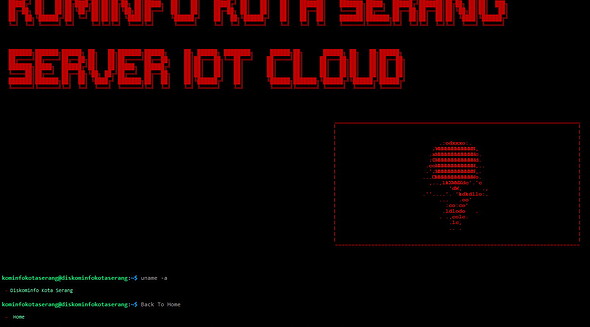#include <I2S.h>
/* Sketch by RBMK-5000
This sketch is ready to use, simply fill your WiFi SSID, Password & Blynk Token on line 21-23 below.
Use NodeMCU ESP8266 or Wemos D1 mini + Oled I2C 128x64 SSD1306.
I also provide Detailed Schematic and Blynk Project QR Code, refer elsewhere.
*/
#define BLYNK_TEMPLATE_ID "PZEM-004T"
#define BLYNK_DEVICE_NAME "ESP 8266"
#define BLYNK_AUTH_TOKEN "b2wkJjplqB8dPLsdt8ONJdYw1JuF3yta"
#include <PZEM004Tv30.h>
#include <BlynkSimpleEsp8266.h>
#include <Wire.h>
#include <Adafruit_GFX.h>
#include <Adafruit_SSD1306.h>
#define DISPLAY_ADDRESS 0x3C // or 0x3D
#define DISPLAY_SCL_PIN 5
#define DISPLAY_SDA_PIN 4
#define DISPLAY_WIDTH 128 // OLED display width, in pixels
#define DISPLAY_HEIGHT 64 // OLED display height, in pixels
#define DISPLAY_RESET_PIN -1 // Reset pin # (or -1 if sharing with ESP8266 reset pin)
Adafruit_SSD1306 display(DISPLAY_WIDTH, DISPLAY_HEIGHT, &Wire, DISPLAY_RESET_PIN);
PZEM004Tv30 pzem1(14, 12); // GPIO14(D5) to Tx PZEM004; GPIO12(D6) to Rx PZEM004
char ssid[] = "TP-Link_2DD4"; // WiFi Name
char pass[] = "050170"; // WiFi Password
char auth[] = "b2wkJjplqB8dPLsdt8ONJdYw1JuF3yta"; //Blynk Token
float voltage1, current1, power1, energy1, frequency1, pf1, va1, VAR1;
void setup() {
Serial.begin(115200);
setupDisplay();
Blynk.begin(auth, ssid, pass, "iot.serangkota.go.id", 8080); // Change the Blynk Server and Port Number when required.
}
void setupDisplay() {
Wire.begin(DISPLAY_SDA_PIN, DISPLAY_SCL_PIN); // You can also set I2C SCL&SDA pins to other GPIOs
display.begin(SSD1306_SWITCHCAPVCC, DISPLAY_ADDRESS);
display.clearDisplay();
display.setCursor(10, 0);
display.setTextSize(2);
display.setTextColor(SSD1306_WHITE);
display.println("PZEM-004T");
display.setCursor(10, 36);
display.setTextSize(1);
display.setTextColor(SSD1306_WHITE);
display.println("Connecting Blynk..");
display.display();
delay(1000);
}
void loop() {
voltage1 = pzem1.voltage();
voltage1 = zeroIfNan(voltage1);
current1 = pzem1.current();
current1 = zeroIfNan(current1);
power1 = pzem1.power();
power1 = zeroIfNan(power1);
energy1 = pzem1.energy() / 1000; //kwh
energy1 = zeroIfNan(energy1);
frequency1 = pzem1.frequency();
frequency1 = zeroIfNan(frequency1);
pf1 = pzem1.pf();
pf1 = zeroIfNan(pf1);
if (pf1 == 0) {
va1 = 0;
} else {
va1 = power1 / pf1;
}
if (pf1 == 0) {
VAR1 = 0;
} else {
VAR1 = power1 / pf1 * sqrt(1-sq(pf1));
}
delay(1000);
Blynk.run();
// Send to Blynk
Blynk.virtualWrite(V1, voltage1);
Blynk.virtualWrite(V2, current1);
Blynk.virtualWrite(V3, power1);
Blynk.virtualWrite(V4, energy1);
Blynk.virtualWrite(V5, frequency1);
Blynk.virtualWrite(V6, pf1);
Blynk.virtualWrite(V7, va1);
Blynk.virtualWrite(V8, VAR1);
Blynk.virtualWrite(V9, (power1 / va1) * 100);
Serial.println("");
Serial.printf("Voltage : %.2f\ V\n", voltage1);
Serial.printf("Current : %.2f\ A\n", current1);
Serial.printf("Power Active : %.2f\ W\n", power1);
Serial.printf("Frequency : %.2f\ Hz\n", frequency1);
Serial.printf("Cosine Phi : %.2f\ PF\n", pf1);
Serial.printf("Energy : %.2f\ kWh\n", energy1);
Serial.printf("Apparent Power : %.2f\ VA\n", va1);
Serial.printf("Reactive Power : %.2f\ VAR\n", VAR1);
Serial.printf("---------- END ----------");
Serial.println("");
display.clearDisplay();
display.setCursor(0, 0);
display.setTextSize(1);
display.setTextColor(SSD1306_WHITE);
display.printf("Voltage : %.2f\ V\n", voltage1);
display.printf("Current : %.2f\ A\n", current1);
display.printf("Power RMS: %.2f\ W\n", power1);
display.printf("Cos Phi : %.2f\ PF\n", pf1);
display.printf("Apprn Pwr: %.1f\ VA\n", va1);
display.printf("React Pwr: %.1f\ VAR\n", VAR1);
display.printf("Frequency: %.1f\ Hz\n", frequency1);
display.printf("Energy : %.1f\ kWh\n", energy1);
display.display();
delay(2000);
}
void printValue(String label, float value) {
if (value != NAN) {
Serial.print(label); Serial.println(value);
} else {
Serial.println("Error reading");
}
}
float zeroIfNan(float v) {
if (isnan(v)) {
v = 0;
}
return v;
}
 Code should be formatted as example below.
Code should be formatted as example below.